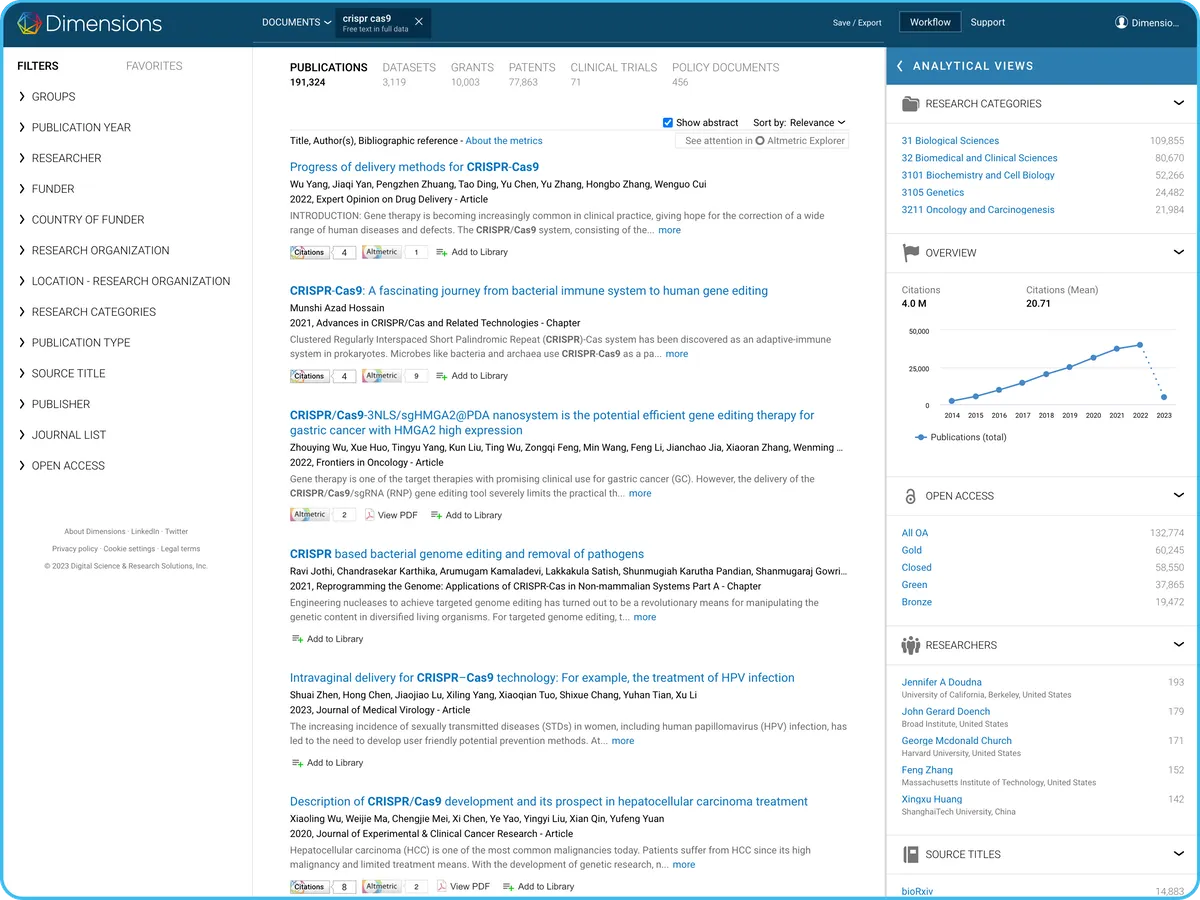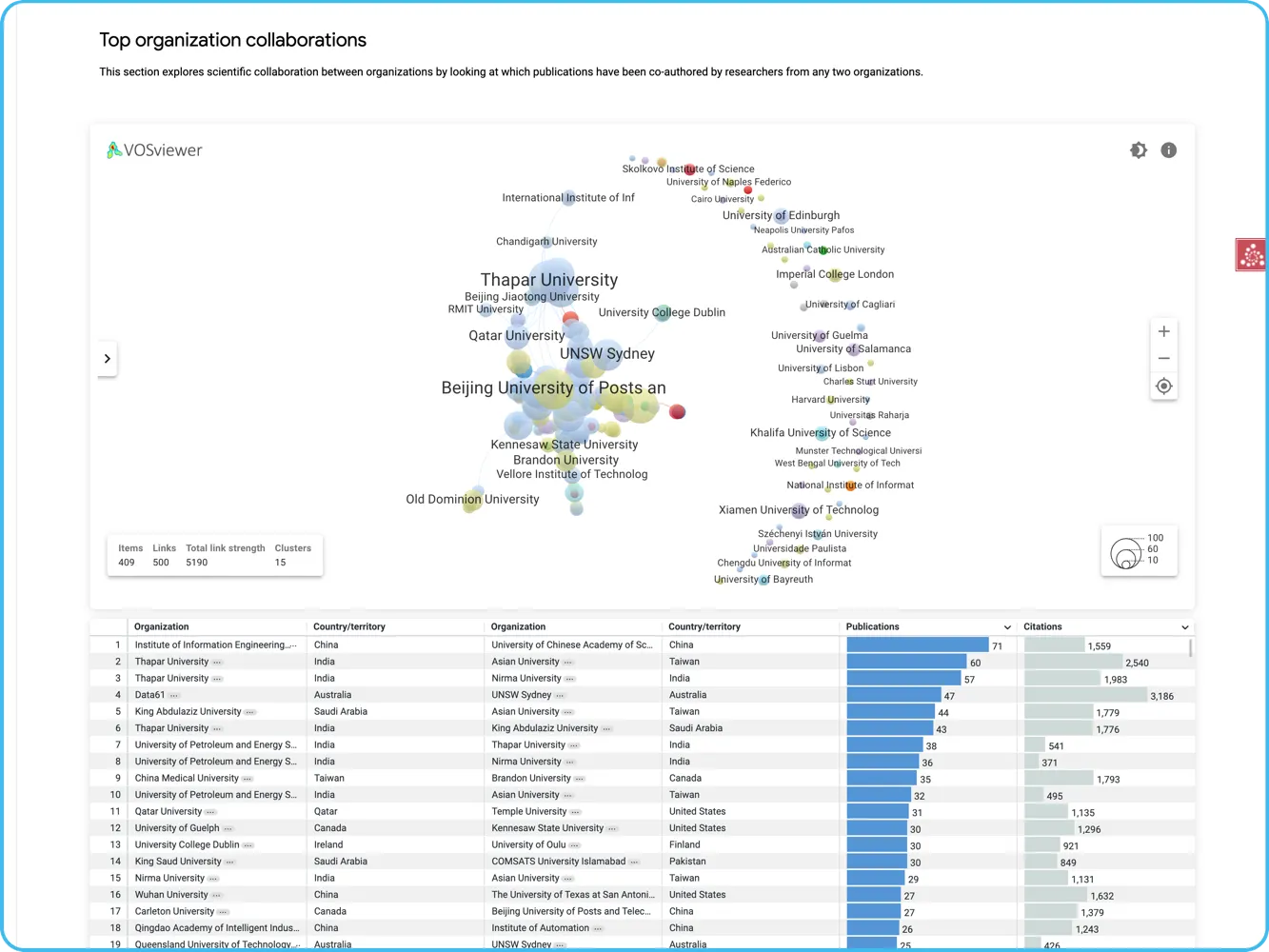
Dimensions Analytics
Find the information you need in millions of publications, patents, datasets, grants, and more, and get an overview of topics, organizations, people, or network profiles.


Dimensions provides a suite of data products and time-saving solutions that connect the dots across the research ecosystem.
You can be confident that you’re not missing anything vital, as we host the largest collection of interconnected global research data with visual applications to fuel discovery.
Whatever you need to uncover, our platform and solutions can drive your decision-making and propel information discovery, saving you hours of time.
What is Dimensions?
We provide the world’s largest collection of linked research data, accessible via our web platform and time-saving, workflow-based applications.
Alternatively, our data science experts can create a customized solution to meet your needs.
Watch our short video to learn more about our data and how we speed up research discovery.
With Dimensions, the possibilities are endless.
We’re proud to serve organizations big and small across government bodies, pharmaceutical companies and corporate enterprises to leading universities and publishers.
We put users at the heart of what we do and have created solutions to solve everyday research problems.
To find a solution for your needs, start by taking a look at our audience pages.
Fast-track your workflow. See some of our most popular uses below or explore our use cases to see what else we can do.
Quickly undertake complex landscape analysis.
Identify new technologies, spot research opportunities and stay ahead of competitors.
Our visual and interactive application allows you to analyze millions of research outputs for any given research landscape in seconds.
Pinpoint reviewers for grant applications or publication manuscripts at speed.
Access a data-driven list of potential reviewers. A “match score” listed against each individual gives an idea of how well their expertise aligns with your application/manuscript.
Create a solution built for your organization’s exact needs.
Our friendly expert data scientists can solve your research questions and uncover the exact information you need with secure and innovative custom solutions built for you.
Talk to us to see how we can help you.
Discover time-saving solutions to accelerate your workflow.